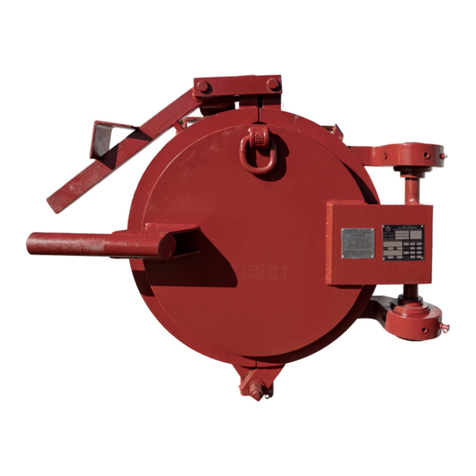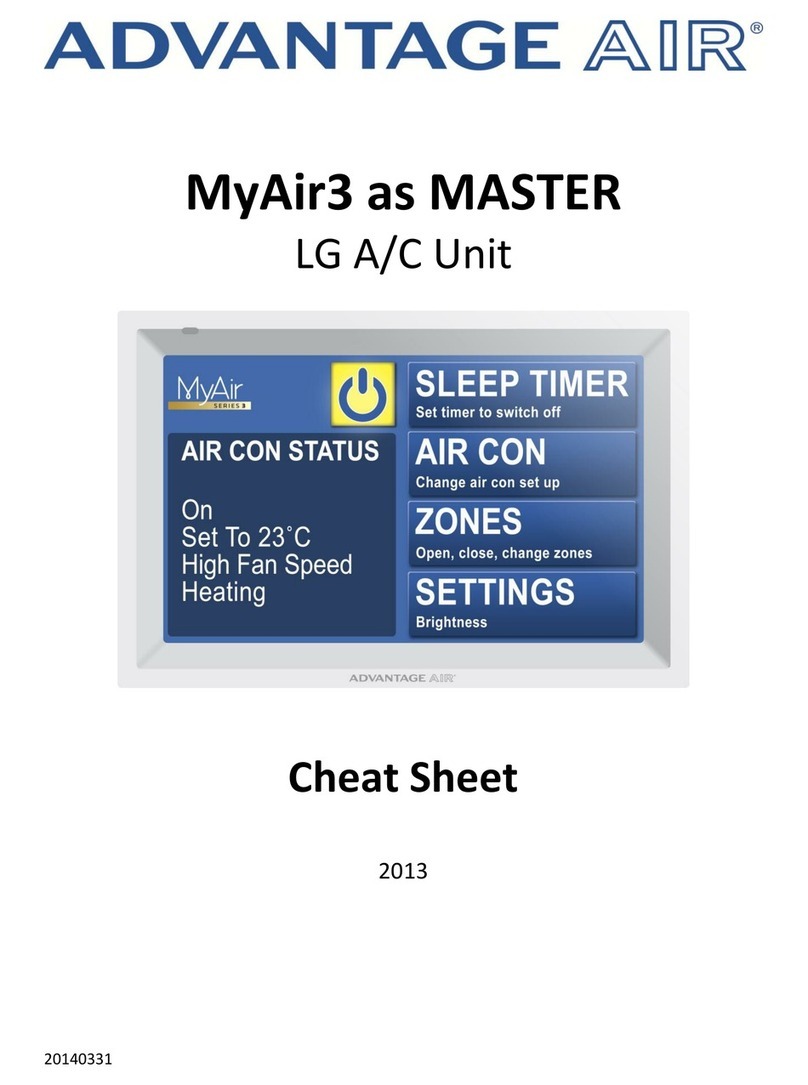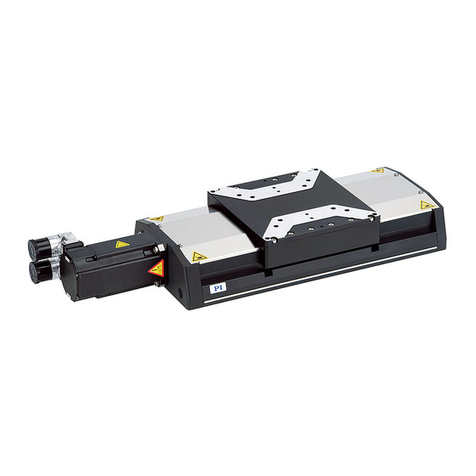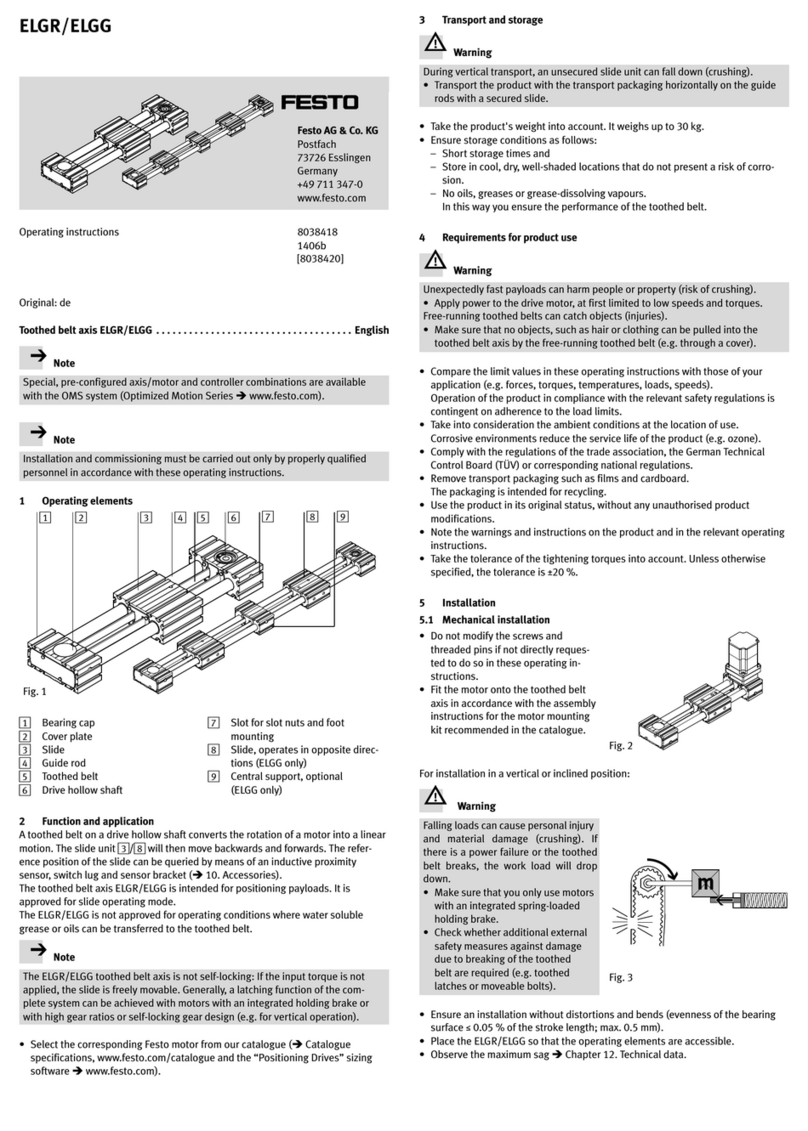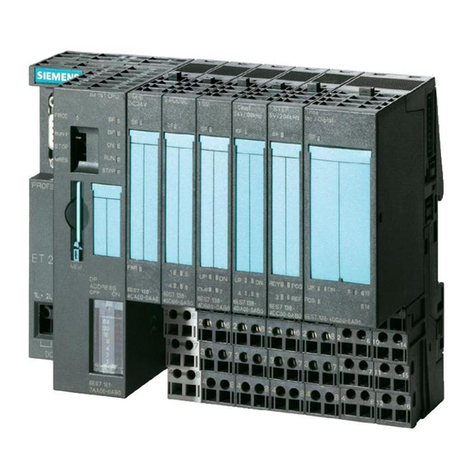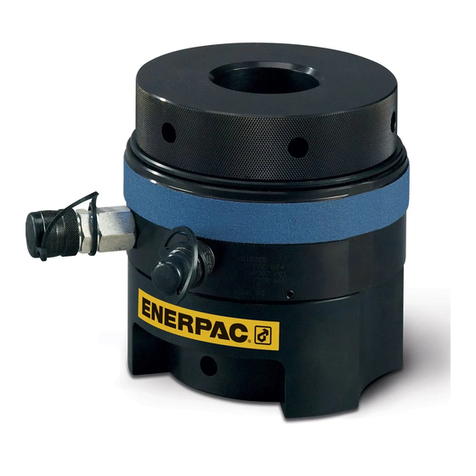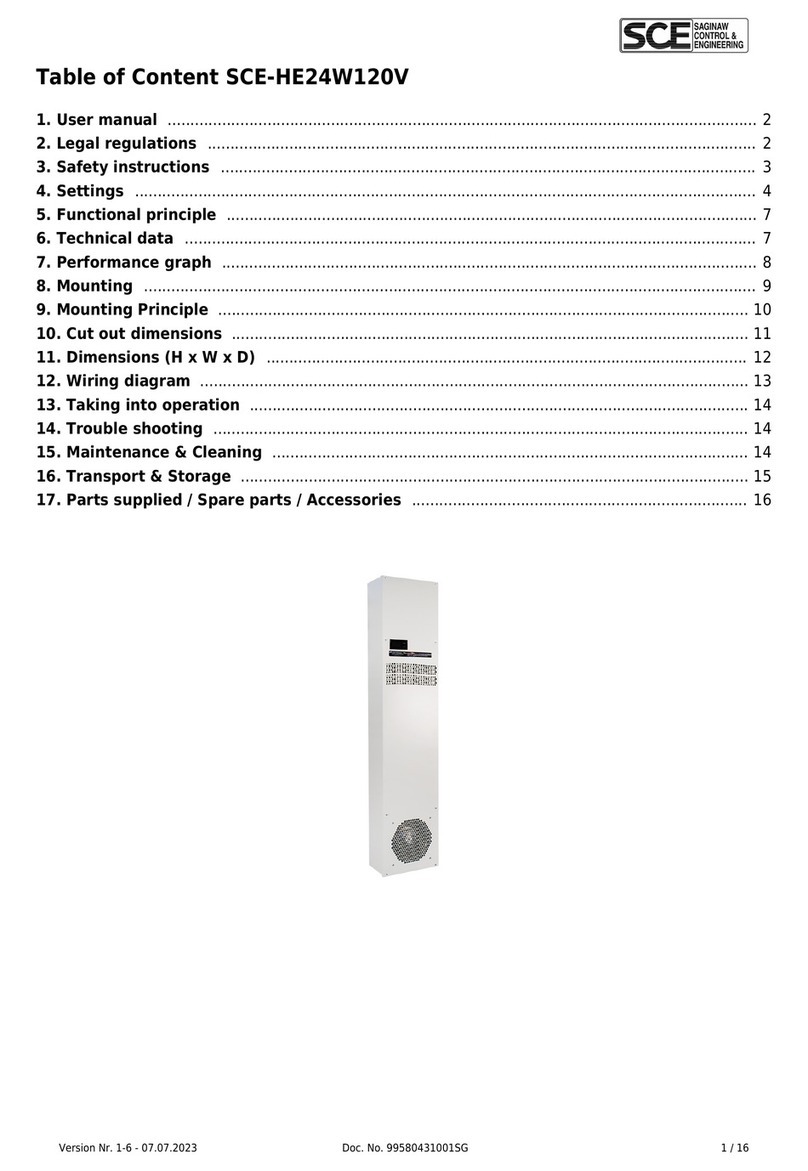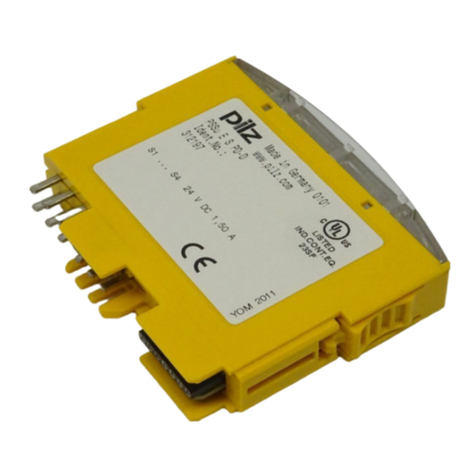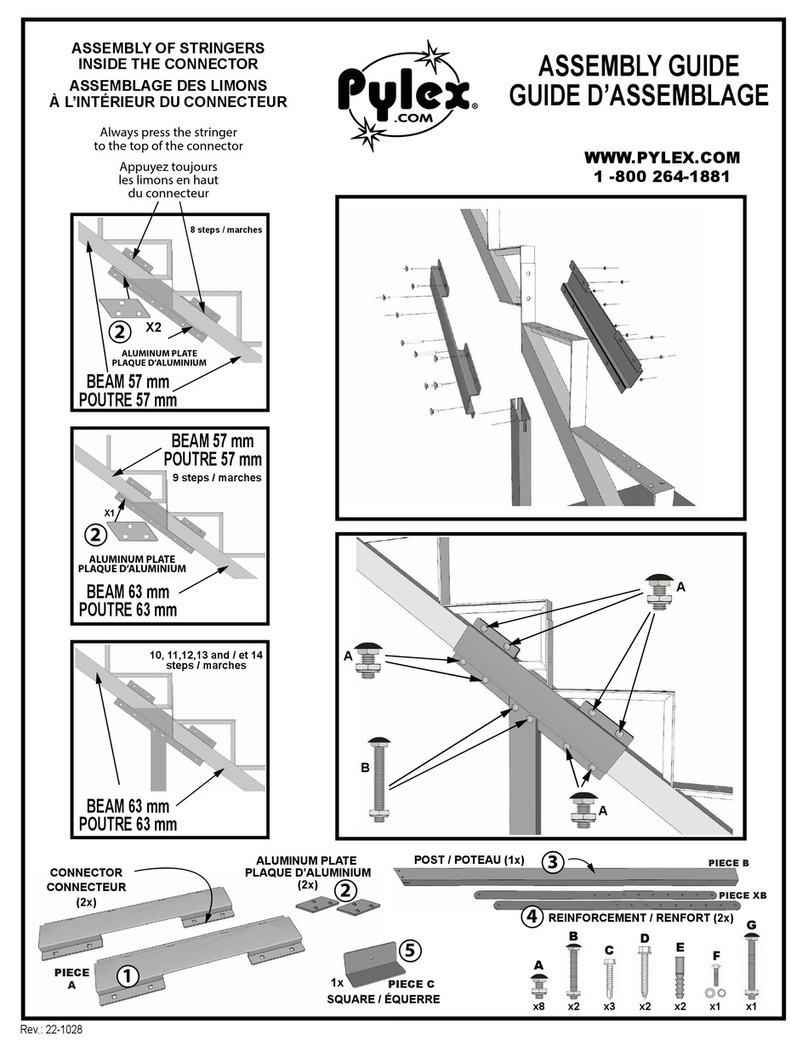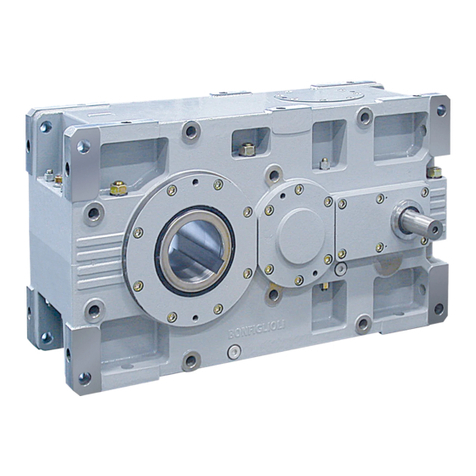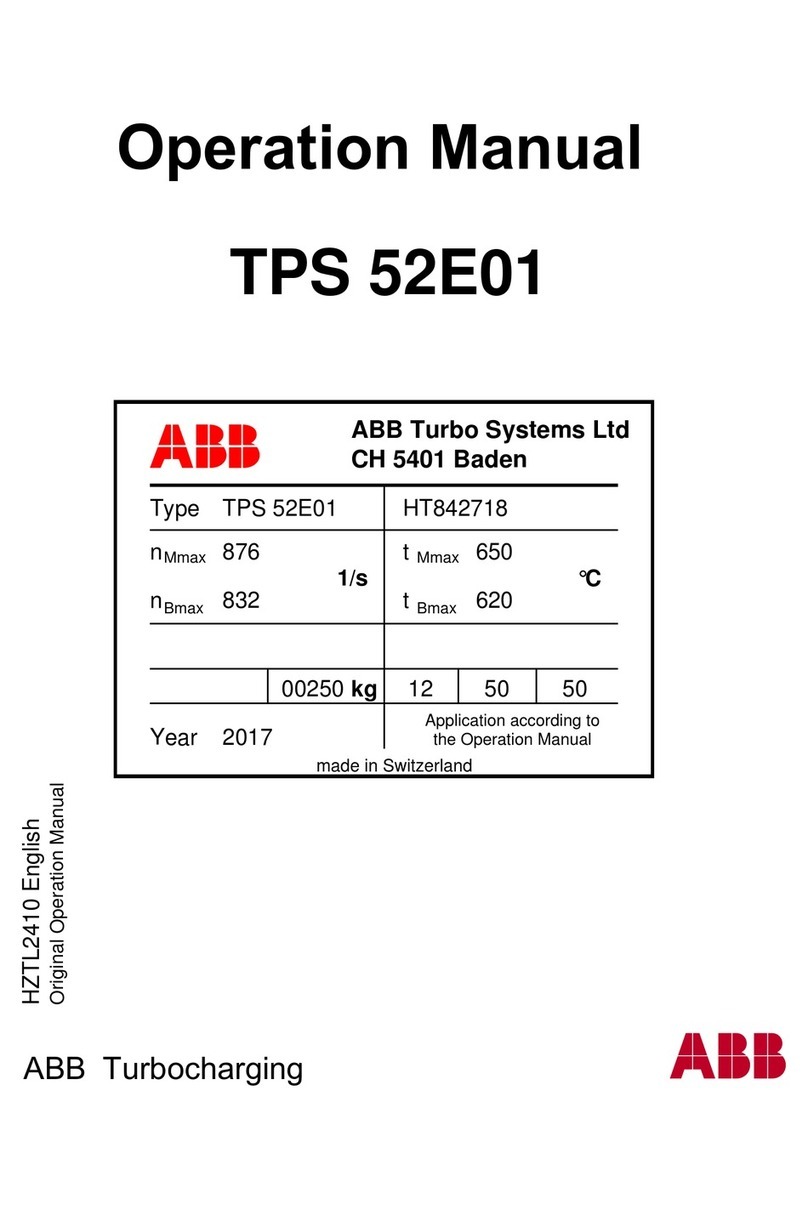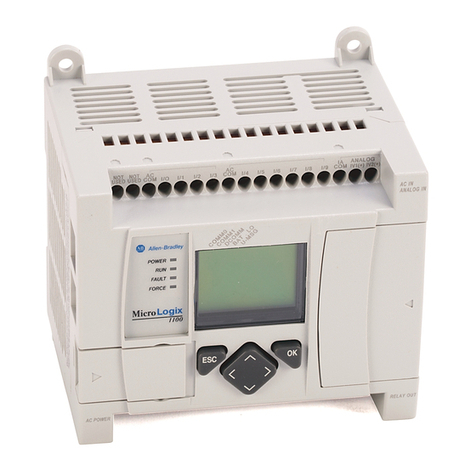TDW POLYSTOPP Manual

TDW France-22-E-03-09
1
POLYSTOPPfor PE PIPE
Bigsizes315-355mm
Operation and Maintenance Instructions*
*The present transitional version of the manual should be updated, upon the
launching of the new design valves.

TDW France-22-E-03-09
2

TDW France-22-E-03-09
3
© Copyright 2019
All rights reserved
T.D. Williamson France
NOTICE
Any operation involving work on pipe containing
liquids or gases under pressure is potentially
hazardous. It is necessary, therefore, that correct
procedures be followed in the use of this equipment to
maintain a safe working environment.
No person should use this equipment who is not fully
trained in the procedures stated in this manual, and
who is not fully aware of the potential hazards
connected with work on pipe containing liquids or
gases under pressure.
The purchaser of this equipment is responsible for the
manner in which this equipment is used and the
training and competence of the operators.
Should any difficulty arise at any time in the use of
this equipment, please contact TDW immediately.
T.D. Williamson (France) S.A.S.
11, rue de l’Atome – Z.I.
B.P. 50081
67802 BISCHHEIM cedex - France
Phone : +33 (0)3 88 19 72 38
Fax +33 (0)3 88 19 72 19
E-mail: tdw.commercial@tdwilliamson.com
Visit TDW’s Web Site at www.tdwilliamson.com
™ Trademark of T.D. Williamson, Inc. in the United States and foreign countries.
® Registered trademark of T.D. Williamson, Inc. in the United States and foreign countries.

TDW France-22-E-03-09
4
Table of Contents
Paragraph
Title
Page
Section I: Introduction
1.0
Description
5
2.0
Scope of Applications
6
3.0
System Components
7
4.0
Safety
9
5.0
Equipment Orientation
9
Section II: Installation and operation of the TDW SHORTCUTT10 inch valve
1.0
Introduction
10
2.0
Operating instructions
11
Section III: Tapping 315 and 355 mm Lines with the T-203 Tapping Machine
1.0
Introduction
13
2.0
General Information
13
3.0
Preparations
13
4.0
Tapping the Line
18
Section IV: Plugging the Line
1.0
Introduction
20
2.0
Plugging the Main Line
20
Section V: Setting the Completion Plug with the POLYSTOPPCompletion Machine
1.0
Preparing the completion machine
30
2.0
Installing the plug
31
3.0
Removal of the valve
32
Section VI: Maintenance
1.0
Introduction
34
2.0
SHORTSTOPPII Plugging Machine
34
3.0
POLYSTOPPcompletion machine
37
4.0
SHORTCUTTvalve
37
Appendix
Parts Lists
39

TDW France-22-E-03-09
5
Section I: Introduction
1.0 Description
The POLYSTOPP®Tapping and Plugging
System is designed for use on 315 and 355 mm
polyethylene pipe.
The system is designed for use with TDW
Electrofusion Saddle Fittings. The fittings
permit access to a line to plug it while line work
is being performed.
The entire system includes equipment for
tapping into the line, plugging the main, and
installingacompletion pluginthefittinginorder
to remove the tapping valve. Some components
of the 315-355 mm system are shown in Figure
1.
Tapping
Plugging
Completion
Figure 1. POLYSTOPPSystem big sizes
for PE Pipe 315-355 mm
This manual describes the procedures for using
this tapping, pluggingand completion system to:
•plug the main line, keeping the line in
service.
•to complete the job by setting a
completion plug, enabling removal of
all tapping/plugging equipment.

TDW France-22-E-03-09
6
This manual is intended to aid the safe operation
and proper maintenance of POLYSTOPP® big
sizes 315-355 mm equipment. Read this
manual carefully before attempting to
operate the equipment. If any portion of this
manual is not clearly understood, or if any
questions arise concerning the equipment's use,
contact T.D. Williamson, S.A. or the nearest
factory representative.
WARNING: Do not attempt a plugging and
completion operation without
following the procedures
contained in this manual. A
departure from prescribed
procedures could present a
hazardous situation causing
injury to personnel and
damage to equipment.
Do not alter this equipment or
any of its component parts.
Use only replacement parts
manufactured or
recommended by TDW.
Any alteration of this
equipment, or use of parts not
manufactured or
recommended by TDW could
cause the machine to
malfunction, causing damage
to the equipment and/orinjury
to personnel.
Before taking this equipment to the field for an
actual plugging operation, conduct a tapping and
plugging exercise on a length of test pipe to
become familiar with the operational
characteristics of the equipment.
2.0 Scope of Applications
The POLYSTOPP® big sizes equipment can be
used on polyethylene pipe, for tapping and
plugging SDR 11 and SDR 17.6 pipe in sizes 315
and 355 mm for the following applications:
•To temporarily stop flow in the line (using
one plugging machine).
•To isolate a section of the line (using two
plugging machines).
•To set a completion plug in the TDW
polyethylene electrofusion saddle fitting.
A complete job will consist of the following
major steps:
•Installation and testing of the fitting(s).
•Tapping the line through the fitting (s).
•Plugging the main line.
•Setting the completion plug.
•Removing the equipment.

TDW France-22-E-03-09
7
3.0 System Components
3.1 Primary System
A. The tapping machine used with this system
is the TDW T-203 tapping machine for both
315 and 355 mm pipe.
B. The T-203 tapping machine is an air or
hydraulic driven tapping machine used for
315 and 355 mm taps. See figure 2.
Figure 2. T-203 Tapping Machine
C. The SHORTSTOPP II 8x12 Folding Head
Plugging Machine is used with this system
to plug 315- and 355 mm lines. This
plugging machine consist of a control bar,
housing, a jacking mechanism for lowering
and raising the plugging head, and a folding
plugging head which opens into the line,
stopping flow. An example of a folding head
plugging machine is shown in figure 3.
Figure 3. SHORTSTOPPII Plugging Machine

TDW France-22-E-03-09
8
D. When tapping and plugging work is done, a
completion plug must be inserted into the
neck of the fitting using the POLYSTOPP
completion machine. The completion plug
is lowered through the valve and threaded
into position in the neck of the fitting. An
O-ring provides a seal. The completion
machine is shown in Figure 4.
Figure 4. POLYSTOPPCompletion Machine
3.2 Accessory Equipment
A. The POLYSTOPP10" Valve is used with
the POLYSTOPP Big Sizes Plugging
System. See figure 5.
Figure 5. POLYSTOPP10" Valve (valve design will
be changed after September 2019)
B. Tapping and plug setting machine adapters
are used to connect various equipment
components to the POLYSTOPP10"
valve. They are flanged on the lower end to
match the valve and threaded on the upper
end to match related equipment. Two such
adapters are shown in Figure 6.
Completion machine Adapter in 2
parts
T-203 Adapter
Figure 6. Machine Adapters
C. Another adapter is a spool used to adapt the
8" SHORTSTOPP® II plugging machine to
the POLYSTOPP10" Valve. It is shown in
Figure 7.
Figure 7. SHORTSTOPP® II plugging machine to
POLYSTOPP10" Valve adapter
D. Cutters are designed to cut through the pipe,
and retain the coupon and chips, minimizing
the amount of chips left in the pipe. Cutter
holder, cutter and pilot are shown in Figure
8.
Figure 8. Cutter holder, cutter and pilot drill

TDW France-22-E-03-09
9
E. Fittings are designed to plug the main line.
The plugging fitting top half is bolted to the
lower half and electrofused to the line. The
top half of the fittings has a completion plug
that is installed into the neck after work is
completed and a blind flange is installed.
This seals the fitting. Fitting is shown in
Figure 9.
Figure 9 : Plugging Fitting
3.3 Related Publications
TDWFrance-22-E-03-09 user manual provides
procedures for preparation of the pipe and
installation of the fitting by the electrofusion
process. Other publications of interest include:
•00-3795-0115 : T-203b Tapping
Machine
4.0 Safety
4.1 Protective Clothing
Protective clothing is recommended whenever
working around machinery. Suggestions
include use of a hard hat, gloves, safety glasses,
safety shoes, garments to cover exposed areas
of skin, and breathing apparatus when toxic
atmosphere exists.
4.2 WARNINGS and Cautions
The purpose of WARNINGS and Cautions in
this manual is to call the operator's attention to
the possible danger of injury to personnel and
damage to equipment and deserves careful
attention and understanding.
A. WARNING: A Warning indicates a
potentially hazardous situation which, if
not avoided, could result in death or serious
injury and damage to equipment.
B. Caution: A Caution indicates a potentially
hazardous situation which, if not avoided,
may result in minor to moderate injury and
damage to equipment. It may also be used
to alert against unsafe practices.
4.3 Proper Grounding
Polyethylene pipe often has internal and external
electrostatic charges that can be hazardous to
personnel and equipment. Develop and use
procedures that provide a grounding system to
eliminate this hazard. The following can be used
as a guideline.
A. Minimize the external charge by wet-
wrapping (or equivalent method) the pipe
outside before installing the SHORTSTOPP
II System.
B. Ground the equipment as follows:
1. Before making the tap, attach the
TDW provided ground strap assembly
from ground to the valve-support.
2. When using the plugging machine for
plugging or completion plug setting,
attach the ground strap assembly to the
valve-support.
WARNING: Before tapping, plugging or
setting a completion plug,
properly ground equipment to
eliminate any static electricity.
Electrostatic charges can be
hazardous to personnel and
equipment.
4.4 Pipe Support
It is mandatory to provide blocks under the pipe
to support the weight of the equipment.
5.0 Equipment Orientation
Use of directional words such as "up," "down,"
"raise," and "lower" throughout this manual
assumes the fitting and valve are mounted on top
of the line and the tap is made vertically through
the top of the pipe. If the valve is installed and
the tap is made in any other orientation,
substitution of appropriate directional words will
be required.

TDW France-22-E-03-09
10
Section II: Installation and operation
of the POLYSTOPP10" Valve
1.0 Introduction
The POLYSTOPP 10" Valve is a full-opening temporary valve used with TDW drilling or tapping machines and
SHORTSTOPP® II plugging equipment. It is recoverable after the tap is complete and a completion plug is set in
the TDW SHORTSTOPP® or POLYSTOPP® fitting.
1.1 Site Preparation
The POLYSTOPP 10" Valve matches ANSI Class 150 bolt patterns.
The compact design of the POLYSTOPP 10" Valve minimizes drilling machine boring bar length required to
complete the tap.

TDW France-22-E-03-09
2.0 Operating instructions
2.1 Installation
A. The POLYSTOPP10" Valve (valve design will be changed after September 2019) can be installed on a
TDW POLYSTOPP® PE or SHORTSTOPP® fitting 315 and 355 mm.
B. Put the support plate on the lower face of the valve with specific nuts
C. Put the centering device onto the plug of the fitting.
D. Put the Plug + centering device onto the fitting.
E. Put the reinforcement tool around the outlet of the fitting.
F. Install the valve onto the fitting. The centering device will guide the valve. Squeeze the nuts in cross,
respecting the torque in minimum 3 turns The torque applies on the nuts is more and less 47 N.m.
G. Put the 2 pipe supports on the pipe and screw on hand be in contact with the support plate

TDW France-22-E-03-09
H. Remove the centering device with the completion machine. With the effort to remove the plug is too
important, unscrew a little the lower nuts of the valve.
I. The operating handle is used for both opening and closing the valve seat.
2.2 Operation
A. When the valve is installed, and before tapping the pipe, open and close the valve disc. The index indicates
the operating disk is in position fully open.
CAUTION: do not use force to open or close a POLYSTOPP
10" Valve. If a valve will not seal with normal
force, foreign material may be in the path of the valve disc travel, or an O-ring, damaged by failure to
equalize pressure properly, can cause leakage. In these cases, excessive force will not cause a valve to
seal and can damage the valve, possibly resulting in personal injury.
Do not use any tool other than the handle provided to operate the valve.
B. The POLYSTOPP10" Valve must not be opened against differential pressure. The pressure must be
equalized on both sides of the disc. An internal bypass, shown in Figure 10, is used for pressure equalization
as well as purging air from the housing above through a bleeder valve.
Fig 10. Internal bypass on POLYSTOPP® 10" valve (valve design will be changed after September 2019)
C. When opening the internal bypass, do not force the bypass valve. The internal by-pass valve must remain
open so that pressure is equalized on both sides of the valve disc before opening the valve.
D. Additional information on operating the POLYSTOPP10" Valve in tapping or plugging operations can be
found in the appropriate tapping or plugging machine manual. Make sure to apply the CAUTION remarks
provided in paragraph 2.2A above.

TDW France-22-E-03-09
Section III: Tapping 315 and 355 mm Lines
w/the T-203 Tapping Machine
1.0 Introduction
When tapping a 315 or 355 line, the T-203
Tapping machine is used to make the tap.
It is important that the entire operation be planned
carefully in advance to make sure that all
equipment and fittings necessary to do the job are
readily available.
2.0 General Information
2.1 Procedures
If the line is to be temporarily plugged after
tapping, it should be tapped with product flowing
so that the tapping chips will disperse. If the chips
have been dispersed, a better seal is likely when
the line is plugged off.
2.3 Keeping Line in Service
If a section of line is to be isolated and repaired,
and it is desired to keep the line in service, as
many as six taps of varying sizes could be
required.
A. Two to isolate the section of line.
B. Two to connect a bypass around the isolated
section.
C. One of two connections for blow-down of the
isolated section and equalization of pressure.
D. After the scope of the work has been defined,
the equipment must be selected, assembled,
and inspected to ensure proper working order.
3.0 Preparation
3.1 Fitting
Attach fitting to pipeline following fitting
installation instructions.
3.2 Valve
A. For installing the valve, see the paragraph
2.1 above.
3.3 Tapping Machine
A. Install the tapping machine adapter on tapping
machine. Sealing gland on bottomof machine
assures proper cutter alignment in the adapter
when attached. See Figure 12.
Figure 12. Install Tapping Adapter
B. Extend boring bar until the end is accessible.
C. Assemble pilot drill. Insert pilot drill through
flange and secure with cap screw. The socket
head cap screw goes through the pilot drill
shaft.
D. Install pilot drill and flange assembly through
cutter and align four bolt holes.
CAUTION: Cutter teeth are extremely sharp.
Wear gloves when handling cutter.
B. Install cutter holder over pilot drill shaft and
align the four bolt holes. Insert bolts into the
holes and thread into cutter shell. Use a flat

TDW France-22-E-03-09
washer on each bolt. Tighten bolts wrench-
tight.
Figure 13. Cutter Holder, Cutter & Pilot drill
Assembly
F. Slide cutter holder/cutter assembly onto
tapping machine boring bar, and align bolt
hole through boring bar. Be extremely careful
of cutter teeth and pilot drill tip.
Figure 14. Cutter holder
G. Install bolt through cutter holder and boring
bar. Install and tighten nut to secure cutter
assembly, as shown in Figure 15.
Figure 15. Install bolt and Nut
H. Retract cutter fully into housing. Zero will
show in one of the four tapping machine sight
windows. The boring bar may require turning
slightly to align zero. See Figure 16.
Figure 16. Zero in Window
3.4 Required Measurements
Tapping Measurements. The following
measurements must be taken prior to tapping to
determine the boring bar travel distance required
to complete the tap: Figure 17 shows the
measurements necessary to complete the tap.

TDW France-22-E-03-09
Figure 17. Measurements
A. Take and record measurement A. This is the
distance from the face of the tapping machine
adapter flange to the tip of the pilot drill. See
Figures 17 and 18.
Figure 18. Take and Record Measurement A
B. Take and record measurement B. This is the
distance from the top face of the tapping
valve, including gasket, to the top of the pipe
to be tapped. See Figures 17 and 19.
Figure 19. Take and record Measurement B
C. Add Measurement A to Measurement B to
determine the lower-in distance.
D. Measurement C is the distance from the top
of the pipe to the point where the coupon is
free and the cutter has “cleaned up” the
tapped hole. See Figure 20. This distance is
dependent on the size of cutter and size of
pipe, SDR of the pipe.

TDW France-22-E-03-09
Figure 20. Measurement C
E. The sum of distance C and the lower-in
distance (B+A) is the total boring bar travel
required to complete the tap. This number
will be visible in the travel indication port
when the tap is completed.
F. If a completion plug is to be set after the
tapping operation, take and record
measurement H for later use. See Figures 17
and 21. This is the distance from the valve
face, including gasket, to the bottom of the
grove in the neck of the fitting.
Figure 21. Measurement H
3.5 Install Machine
A. Open and close tapping valve to make sure
that it operates freely. Count and record turns
required to open and close the valve. Leave
valve closed.
B. Install T-203 machine on tapping valve and
secure. See Figure 22.

TDW France-22-E-03-09
Figure 22. Install T-203 Tapping Machine (valve design
will be changed after September 2019)
C. Install bleeder valve. See figure 23.
Figure 23. Install Bleeder Valve
3.6 Conduct Pressure Test
A. Using the bleeder valve for access, conduct
pressure test on tapping
machine/adapter/valve/fitting installation.
Make sure tapping valve is open for test. Test
to pipeline pressure.
CAUTION: Do not exceed pipe pressure when
conducting pressure test. Exceeding the
piping system internal pressure may
cause damage to the carrier pipe making
it difficult or impossible to complete the
tapping and/or line plugging operation.
B. After test is completed, leave tapping valve
and bleeder valve open.
3.7 Selecting Power Unit
A. If using air motor drive:
1. Prepare air motor. Minimum air supply
must be 105 cfm (2,9736 cubic meter per
minute) at 90 psi (6 bar).
2. Be sure air supply hose is blown clear of
dirt and moisture. Compressor should
have baffled receiver to keep liquid out
of supply line.
3. Attach air hose. See Figure 24.
Figure 24. Connect Air Supply
4. Adjust lubricator to supply approximately
10 drops of oil per minute. A good grade
of SAE 10W engine oil is recommended.
5. Check operation of motor by opening and
closing control valve.

TDW France-22-E-03-09
4.0 Tapping the Line
4.1 Making the Tap
A. Turn feed screw adjusting cap
counterclockwise to relieve spring tension.
See Figure 25.
Figure 25. Turn Feed Screw Adjusting Cap
B. Install lower-in crank in top of machine and
turn counterclockwise, lowering boring bar
until pilot drill touches top of pipe. The
computed lower-in distance (measurements
A and B) should appear in the travel indicator
port. Retract boring bar one revolution and
remove hand crank.
Note: One revolution of the hand crank will lower
the boring bar 1/8 inch. If, for example, the
lower-in distance was 20 inches, it would
require 160 revolutions of the hand crank to
lower the boring bar to this point.
CAUTION: Do not use the air motor or
hydraulic motor to lower the boring bar.
Damage to the cutter and pilot may
occur.
C. Open air control valve (Figure 26) to start
rotation of boring bar. Adjust filter regulator
knob until desired rpm is obtained. The
recommended RPM is between 15 & 20
RPM.
Figure 26. Open Air Control Valve
Note: RPM can be checked easily by observing
the numbers as they come around in the travel
indication port. Count for 15 seconds and
multiply by four to determine rpm.
CAUTION: Speeds higher than 37 rpm may
cause damage and premature wear to
the air motor.
E. Turn feed adjusting cap clockwise to feed pilot
into pipe. Stop adjustment when air motor
begins to load up.
F. As the pilot drill penetrates the pipe wall,
allow line pressure to completely fill valve
and fittings. Blow line liquid or gas through
bleeder valve a few seconds to purge all air.
Close bleeder valve tightly. The machine can
continue tapping during the air purging
process.
WARNING: Vent pressure bleed valve away
from work area and personnel.
Stand clear of vent when
bleeder valve is opened,
otherwise personal injury can
result from blowing material.
G. If the machine stalls, stop and retract cutter a
few turns of the hand crank and resume
tapping.
H. When tap is complete, check number on
boring bar in travel indication port to make
sure computed travel distance has been
reached.
I. Turn off air control valve or close hydraulic
valve to stop boring bar rotation.
J. Turn feed adjusting cap fully counter-
clockwise to stop feed.
K Place hand crank on top of machine and turn
clockwise, fully retracting cutter into tapping

TDW France-22-E-03-09
machine adapter. Zero should appear in the
travel indication port. Remember that it takes
eight turns to retract boring bar 1 inch.
L. Close tapping valve.
M. Open bleeder valve to bleed off pressure in
adapter.
WARNING: Vent pressure bleed valve away
from work area and personnel.
Stand clear of vent when
bleeder valve is opened,
otherwise personal injury can
result from blowing material.
4.2 Remove Tapping Machine
A. Remove bleeder valve
Figure 27. Remove Chips & coupon
CAUTION: Cutter teeth are very sharp. Wear
gloves and handle cutter with extreme
care when removing chips.
B. After tapping has been completed, take off
the tapping machine.
C. Extend the boring bar.
D. Disassemble the pilot drill and the cutter.
E. Remove the cutter from the cutter holder.
F. Remove the cutter holder.
G. Remove the coupon from the cutter and also
the chips. PE cutters are designed to capture
all but a spoon-full of the chips. In most cases,
chip removal is not necessary.
H. If needed, chips can be removed from the
line by using the POLYSTOPP cleaning
machine.

TDW France-22-E-03-09
Section IV: Plugging the Line
1.0 Introduction
This section provides procedures for temporarily plugging 315-355 mm line while work is being performed.
The line may be kept in service during plugging operations by plugging it at two locations to isolate the line
section in between and running a bypass around the isolated area.
2.0 Plugging the Main Line
All parts that makeup the plugging head assembly must be clean and in good condition. Remove all dirt and
any rust scale from all mating surfaces and bolt holes. All internal threads should be inspected for wear, and
a light coating of lubricating oil applied to reduce friction.
If using a plugging machine with a jack, check the drag on the jacking mechanism following the instructions
in Section VI, Maintenance. Make sure this test is done without the sealing element attached.
2.1 Install the Plugging Head
A. Extend the control bar through the plugging head housing and insert the control bar handles in the
handle connectors. Twist the upper handle to disengage the locking pin. Turn the control bar handles
to align the keyways on the lower end of the external and internal bars, as shown in Figure 28.
Figure 28. Align Control Bar Keyways
B. Plugging head halves are shown in Figure 29.
Table of contents
Other TDW Industrial Equipment manuals
Popular Industrial Equipment manuals by other brands
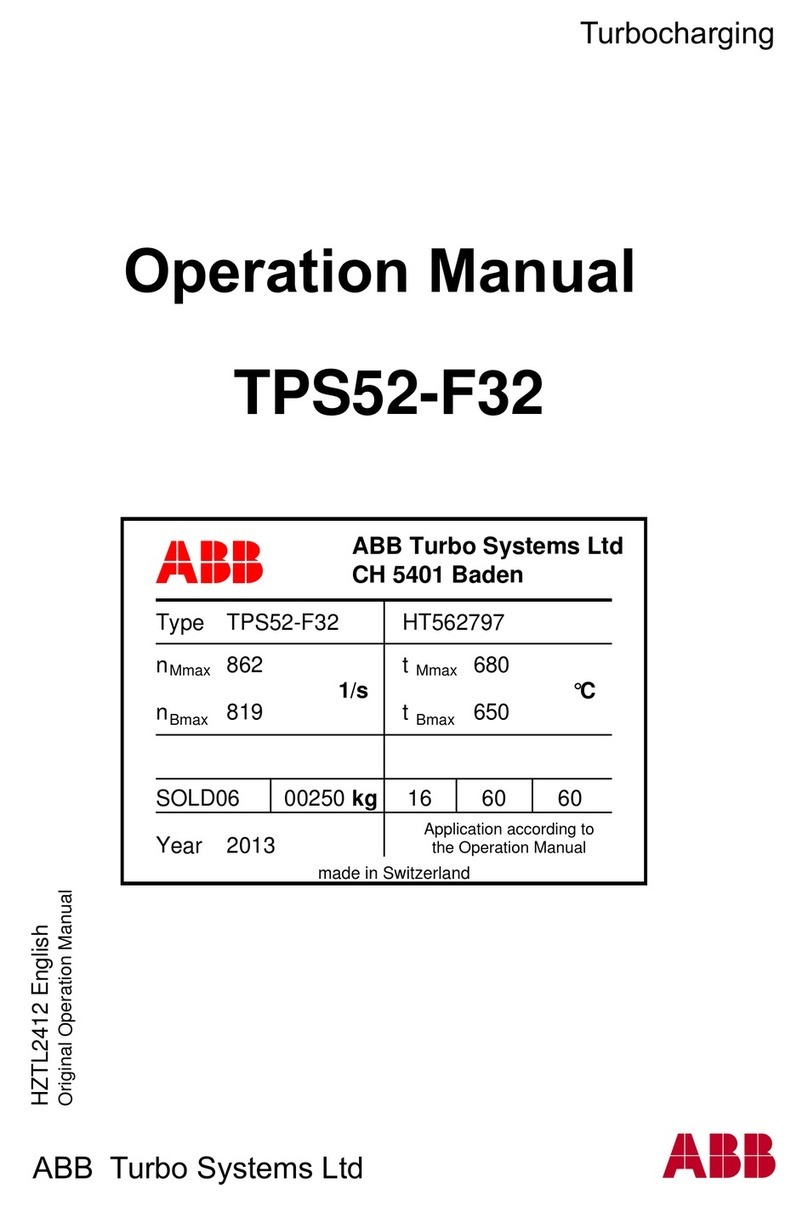
ABB
ABB HT562797 Operation manual

technotrans
technotrans manroland beta.d 40 Original instruction manual
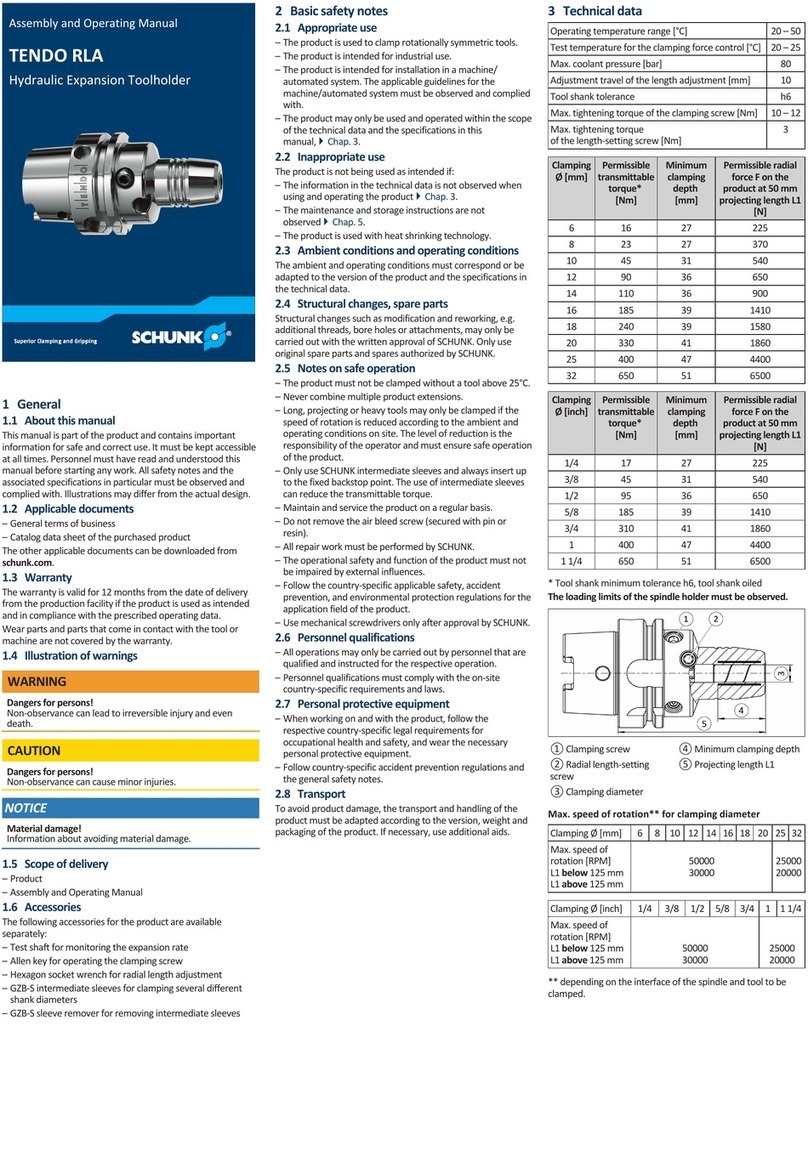
SCHUNK
SCHUNK TENDO RLA Assembly and operating manual
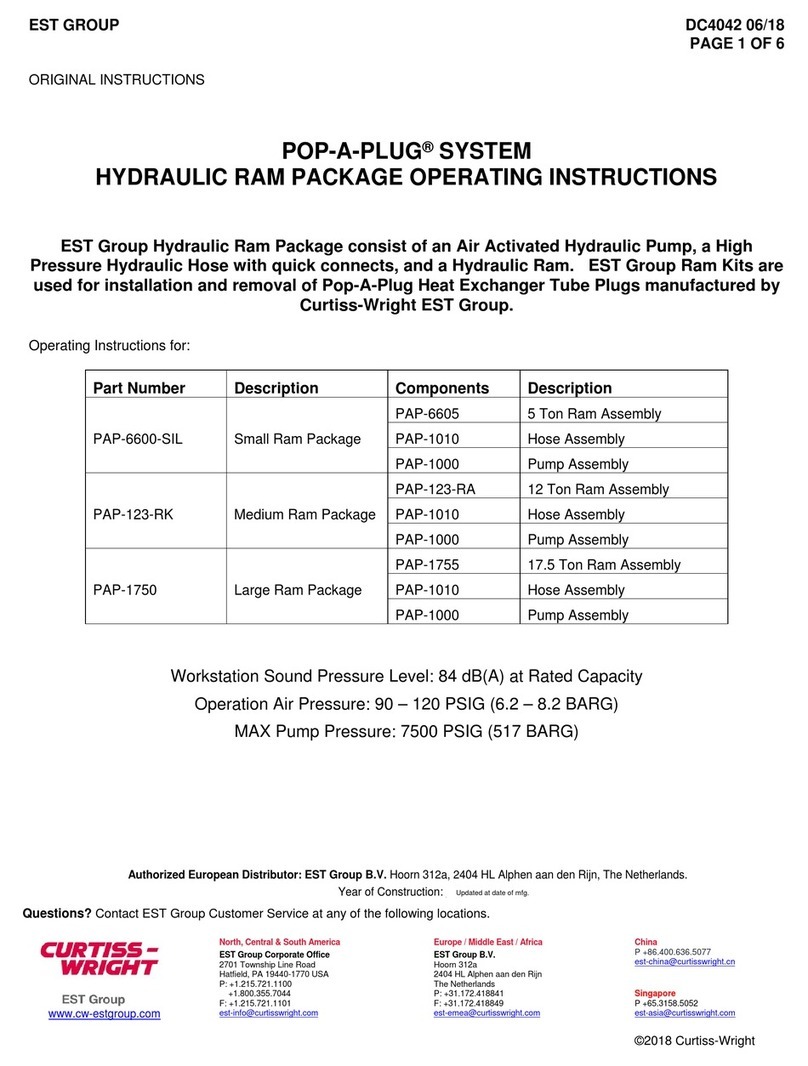
Curtiss-Wright
Curtiss-Wright POP-A-PLUG SYSTEM operating instructions
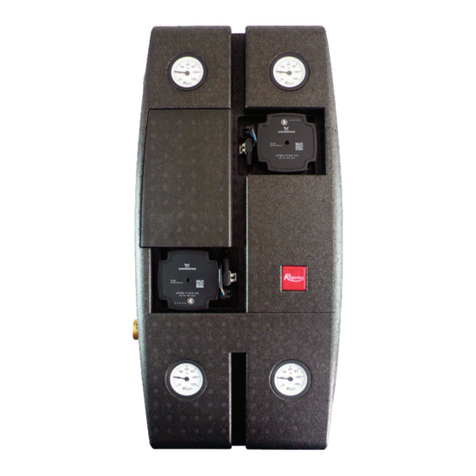
Regulus
Regulus BIO 55 MIX-BP G75 1F Installation and operation manual
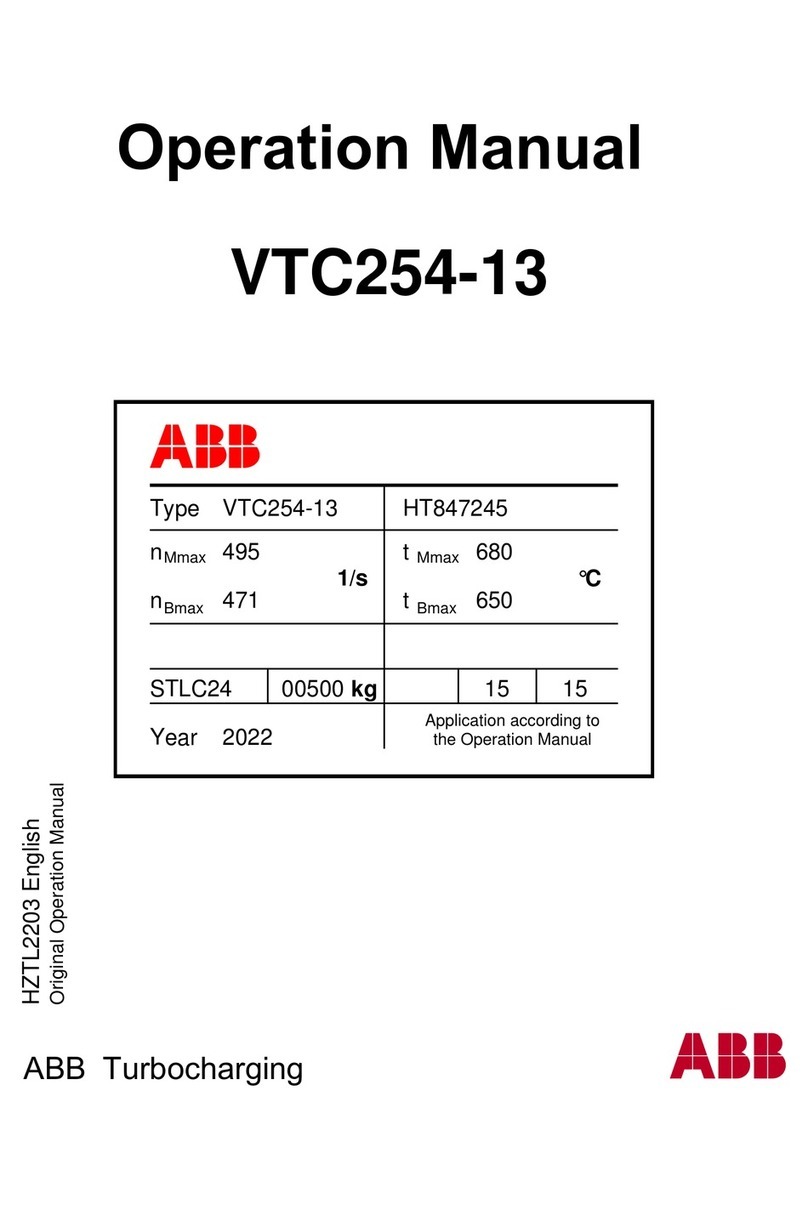
ABB
ABB HT847245 Operation manual
